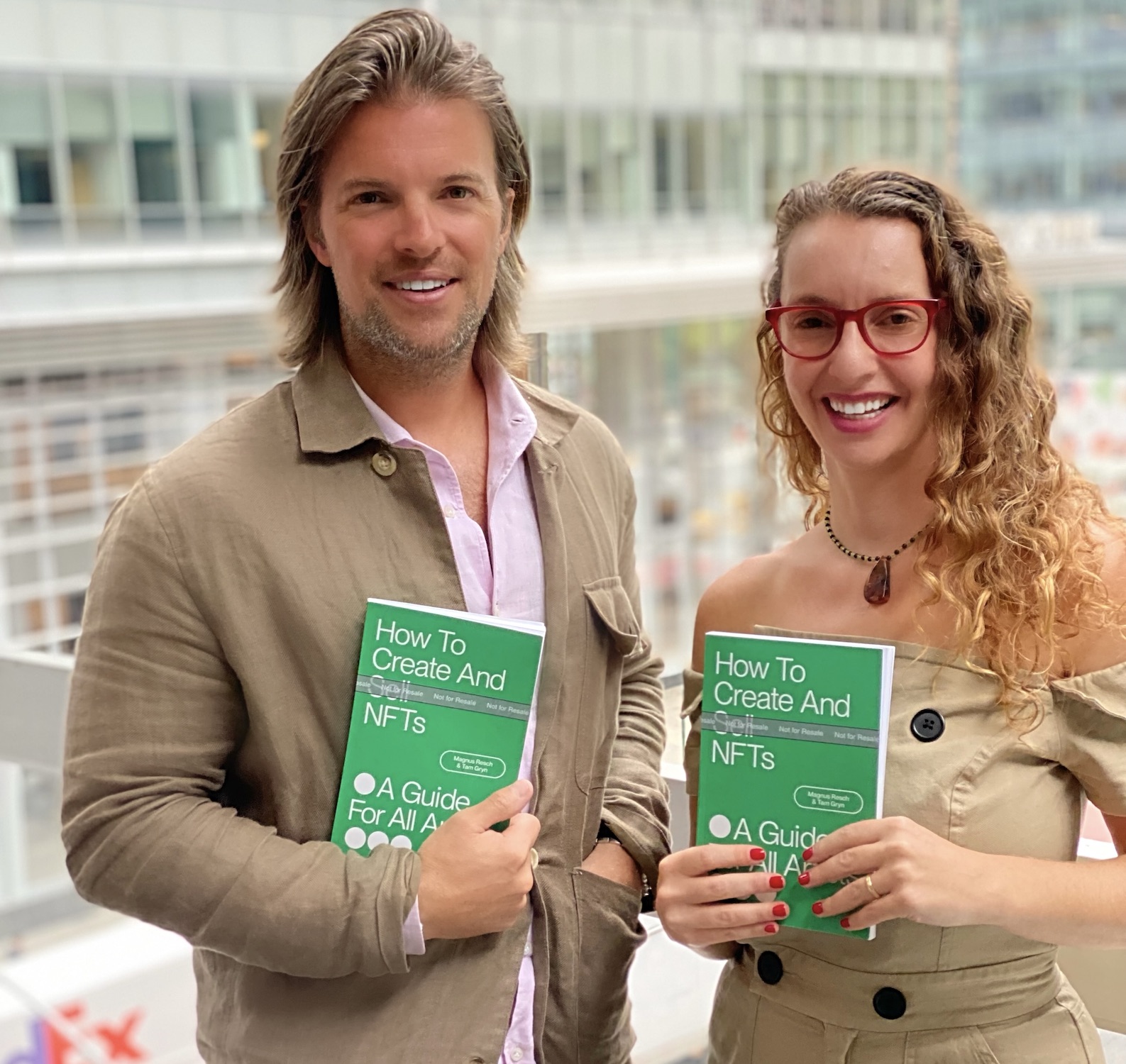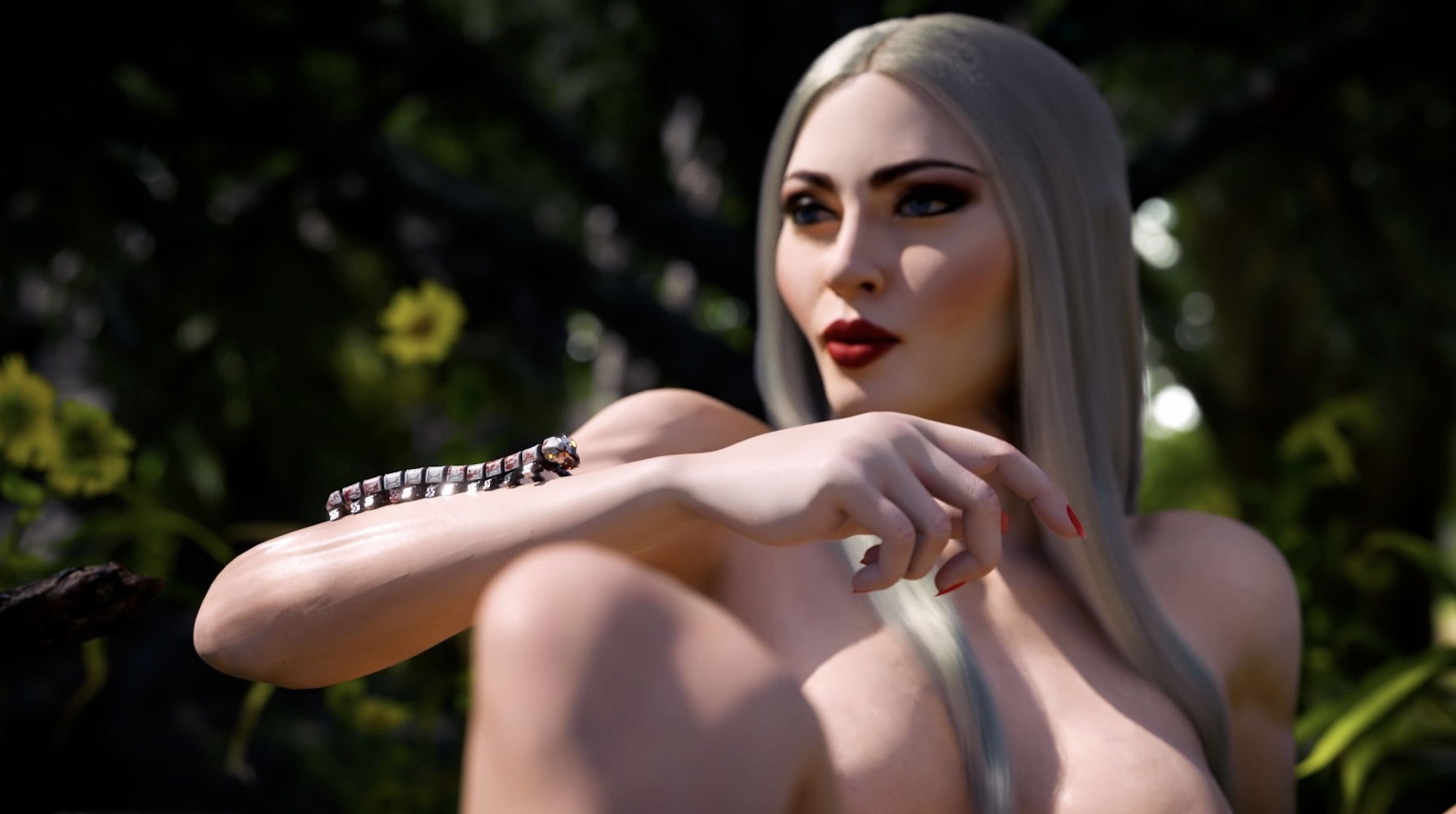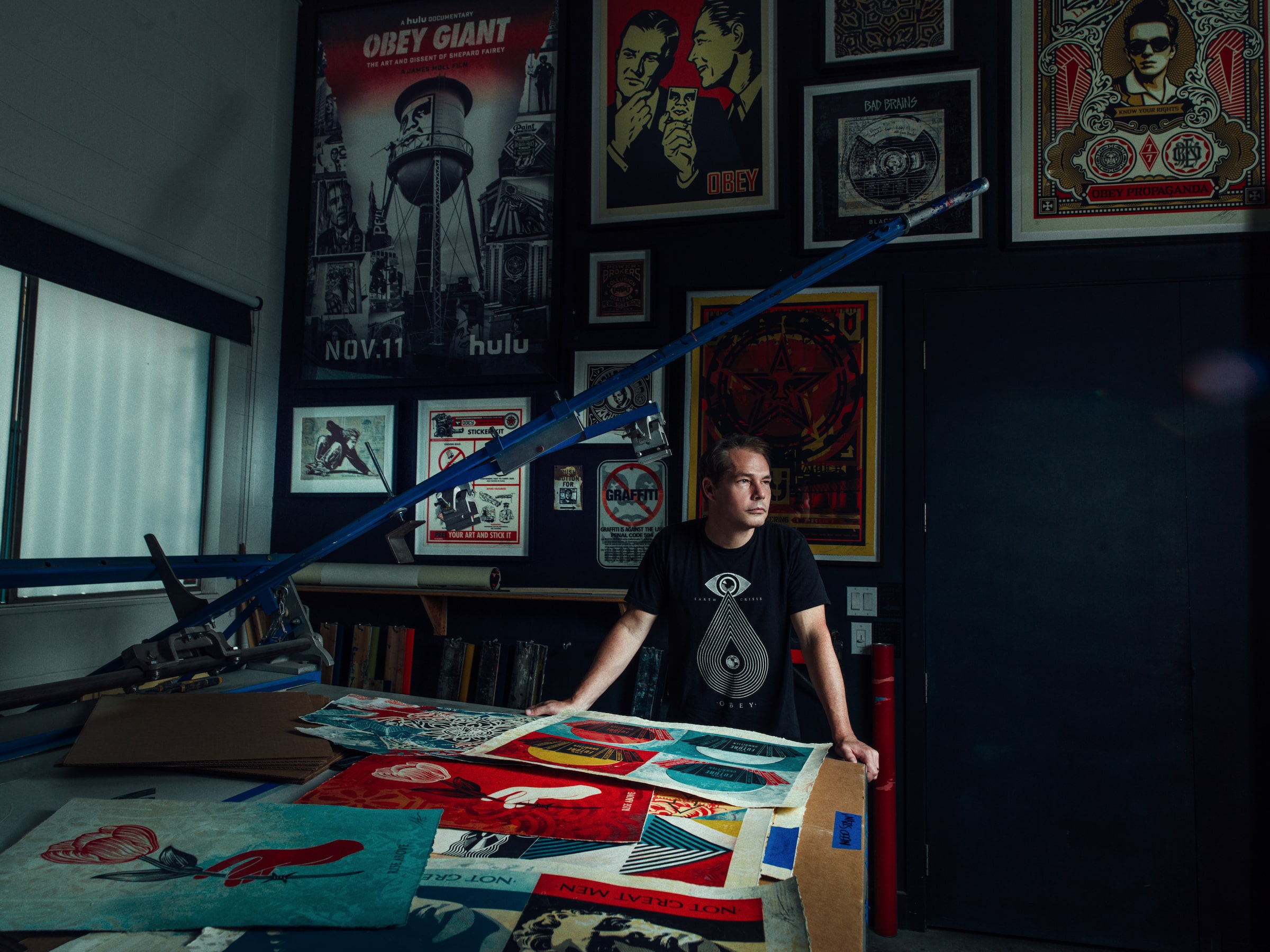Following the success of his best-selling book that launched last year, How To Become A Successful Artist, Magnus Resch is releasing his seventh book. Entitled How To Create And Sell NFTs, A Guide For All Artists, it’s in tune with the rapid growth of digital art and the demand of NFTs. Alongside its co-author Tam Gryn, head curator of SHOWFIELDS, Resch introduced the instructional to combine their shared knowledge of art economics and Web3 technology to dissect crypto art and NFTs down to their foundations—beginning by answering your most basic questions like, “What are NFTs?” and “What is the blockchain?” Within its pages, it merges an existing practice with the virtual space, guiding artists and everyday people to understanding how to mint your own NFTs.
Alongside Gryn and Resch’s extensive research and firsthand experience, the publication welcomes quotes and musings from experts like Nifty Gateway Founder Duncan Cock-Foster, Noah Davis of Christie’s, artists Krista Kim, FEWOCiOUS, IX Shells, Deeze, and Jen Stark, and many more, providing an in-depth look at the scene for those hoping to reap the benefits of its autonomy and inclusivity.
Curious about How To Create And Sell NFTs, and whom it might most benefit, Whitewall spoke with Resch to learn more.
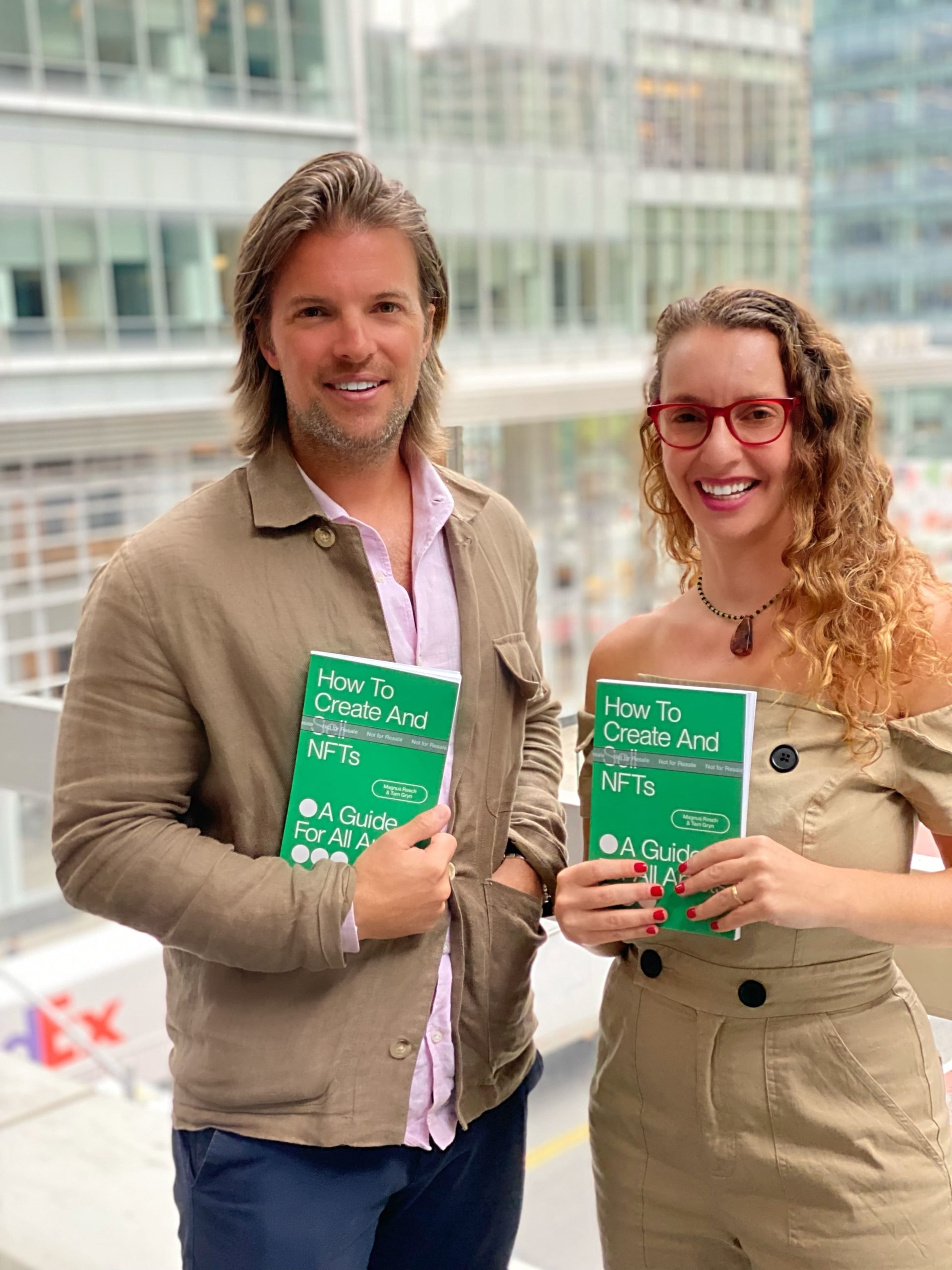
“How to Create and Sell NFTs, A Guide for All Artists,” courtesy of Magnus Resch and Tam Gryn.
WHITEWALL: What was your first encounter with NFTs?
MAGNUS RESCH: I was an early adopter but very hesitant and suspicious. In 2015 I saw Sarah Meyohas’ work Bitchoin, which is the first tokenization of art on a blockchain, effectively a “proto-NFT.” I found it exciting but didn’t understand its full potential. To me, it felt like digital art—a category I wasn’t interested in at that time so I moved on.
In 2017, however, a student asked me about NFTs. This sparked my interest again and I got involved with the generative art movement. I remember well that during these days I pitched the idea to music celebrities to create their own digital artworks and sell them as merchandise. Nobody wanted to listen.
WW: But then something changed which led you to write How to Create and Sell NFTs?
MR: Suddenly, more and more artists were asking me about my opinion on NFTs and how they could use it for their practice. I bought every book that is available on the subject to point them in the right direction. But soon I realized that there is no book tailored to artists operating in the traditional art world. That’s when Tam Gryn, my co-author, and I met and decided to write a book. Our goal was to write a guide for artists who wish to understand what NFTs, the Blockchain, and the Metaverse are all about and how they can use it to advance in their careers.
WW: The book’s introduction begins with Beeple selling the NFT Everydays: The First 5000 Days for a record-breaking price. How does this sale represent the NFT market at large?
MR: Beeple’s sale was an organized marketing stunt to bring additional attention to the space. It worked as it attracted a new group of Crypto investors who hoped to find gold. Many of those have lost money as almost all NFTs are a bad investment. This is very similar to the traditional art world where record prices are artificially created, newly rich collectors buy with their ears and end up with little a few years later. In Web3 the rise and fall just happens faster.
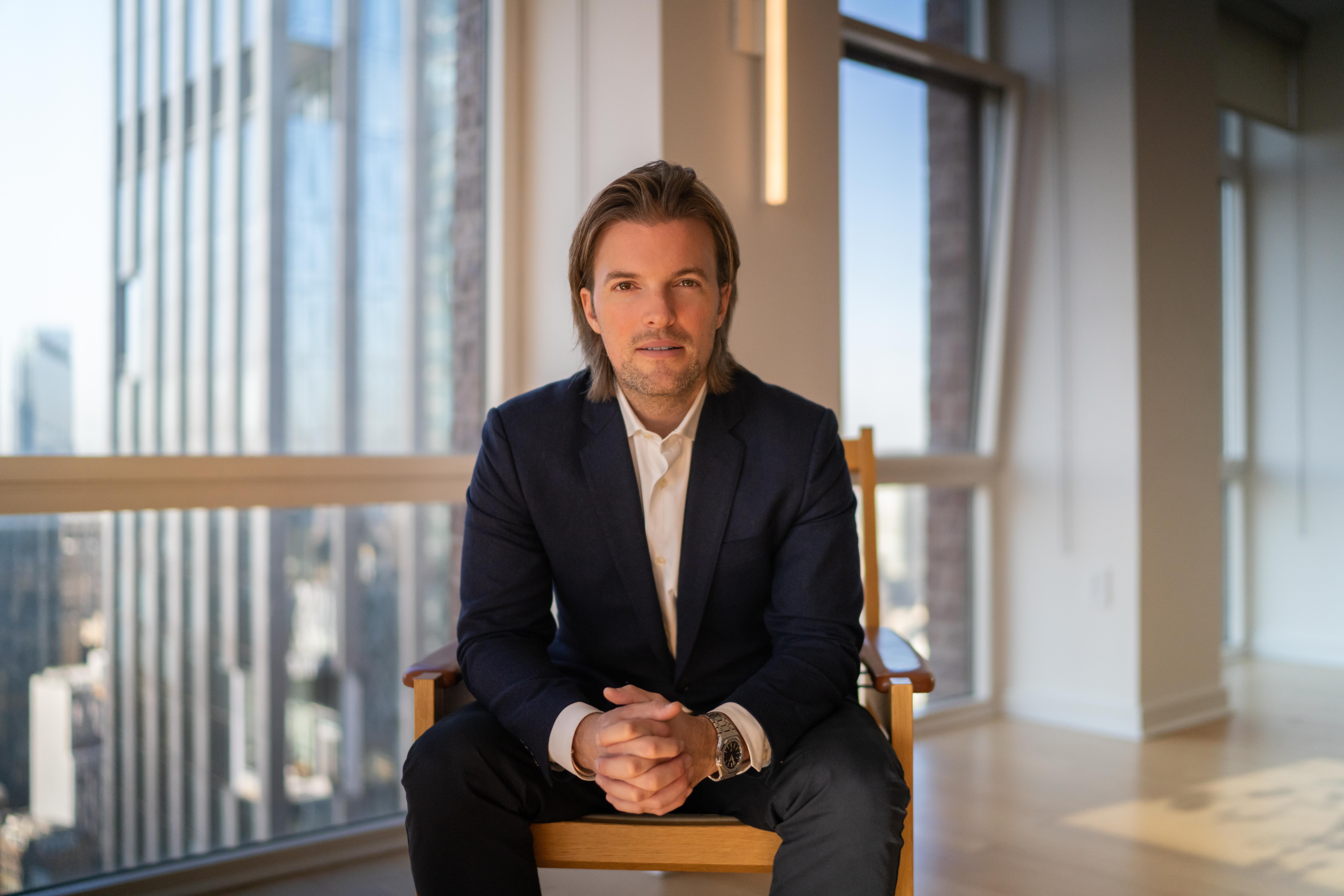
Portrait courtesy of Magnus Resch.
WW: A critique addressed in the book is that NFTs are “a crypto bro’s game.” For a technology that set out to democratize the market, isn’t that counter-productive?
MR: Yes, it is. Web3 may be hailed as welcoming to all, but “crypto bros”—white men— dominate the scene. And the share of the spoils is skewed dramatically toward male artists. Female artists account for 5 percent of NFT revenues.
However, the nature of NFTs allows a more even playing field and improved access for early adopters regardless of how they may have been viewed by the traditional art world. There is great potential for underrepresented members of society to engage with the exciting new art world of NFTs and for that participation to contribute toward addressing socio-economic imbalances and diversity hurdles.
WW: What do you hope readers walk away understanding more about NFTs? Are there resources outlined to help them navigate this space once they finish the book?
MR: We have applied the same logic that worked well in my past books: explain, analyze, encourage. We start off by explaining the fundamentals of NFTs, the blockchain, the metaverse and cryptocurrencies. We then analyze why some NFT projects are successful and present actionable insights of dos and don’ts. And finally, we provide further material to stay up to date, for example, by providing the top Twitter accounts to follow, podcasts to listen to, or newsletters to subscribe to.
WW: When we spoke last year about your book How to Become a Successful Artist, you mentioned that the majority of artists are struggling to make a living and that their art school education is rarely preparing them for a career as a working artist. Does this look different in the NFT space?
MR: A small group of artists who didn’t sell much in the traditional art world are now millionaires. That’s a great achievement as their success shows to every artist that they can make it, too—without the help of galleries, museums, or big collectors from the traditional art world. The artists who have made it are true entrepreneurs.
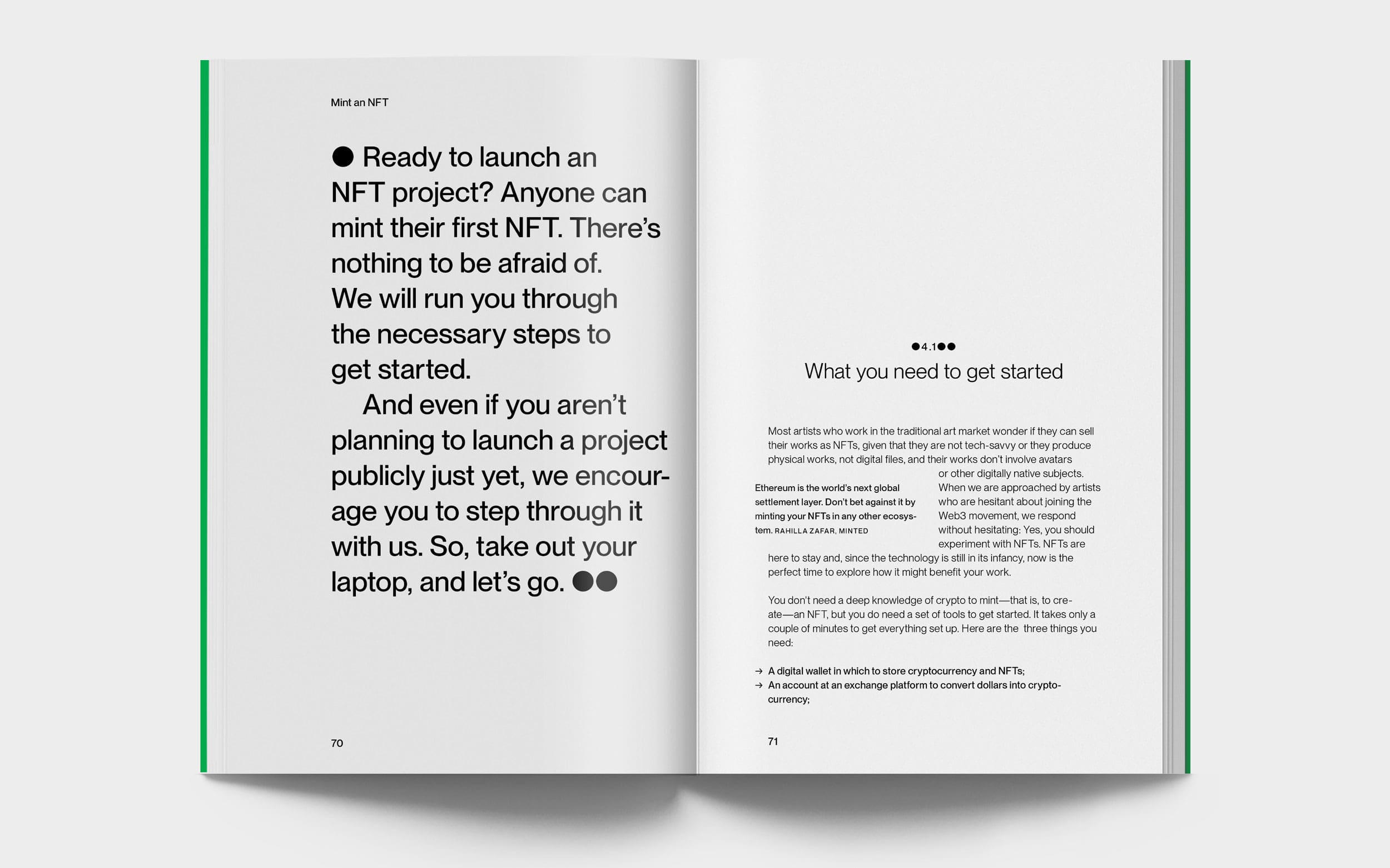
Inside view, “How to Create and Sell NFTs, A Guide for All Artists,” courtesy of Magnus Resch and Tam Gryn.
WW: Do you think creating NFTs and art existing on the blockchain is going to replace the traditional physical gallery model?
MR: This shift toward more independence for artists also means more responsibilities. In a world where artists are selling directly to collectors, when do they have time to create? In order to sustain this shift, artists will need to become more entrepreneurial and learn to manage new tasks. Some will hire more staff, others will gladly work with galleries that take on the jobs of selling, promoting, placing and supporting—the roles that galleries today are already performing. But the power dynamics will have switched. So don’t worry: Nostradamus-like predictions of the gradual decline of the traditional art world into antiquity may be slightly premature. We’re simply entering a new era.
WW: You’ve said the overpriced jpg NFTs will likely fade out, as market trends are predicting. If so, what would you say the future of NFTs might look like?
MR: The introduction of NFTs and the various ways of using them will change the art market in a way that could not have been accomplished otherwise. It is the collaboration, co-creation, and dialogue between artists, engineers, and the audience that makes this transitional phase between institutionalized “painting and sculpture” tradition and digital art so dominant. The new way of working is laying bare the insularity, elitism, and opaque-ness of the traditional art market.
I believe that the advantages of NFTs and blockchain technology will contribute to a better art market, one that is fairer and more equal and democratic. A market that is more inviting, less exclusive and more transparent—converting a large number of new visitors into buyers who purchase art. Art institutions can benefit tremendously from the new capabilities that NFTs and their underlying technologies give us by better engaging their communities and giving them ownership through participation and involvement in governance.
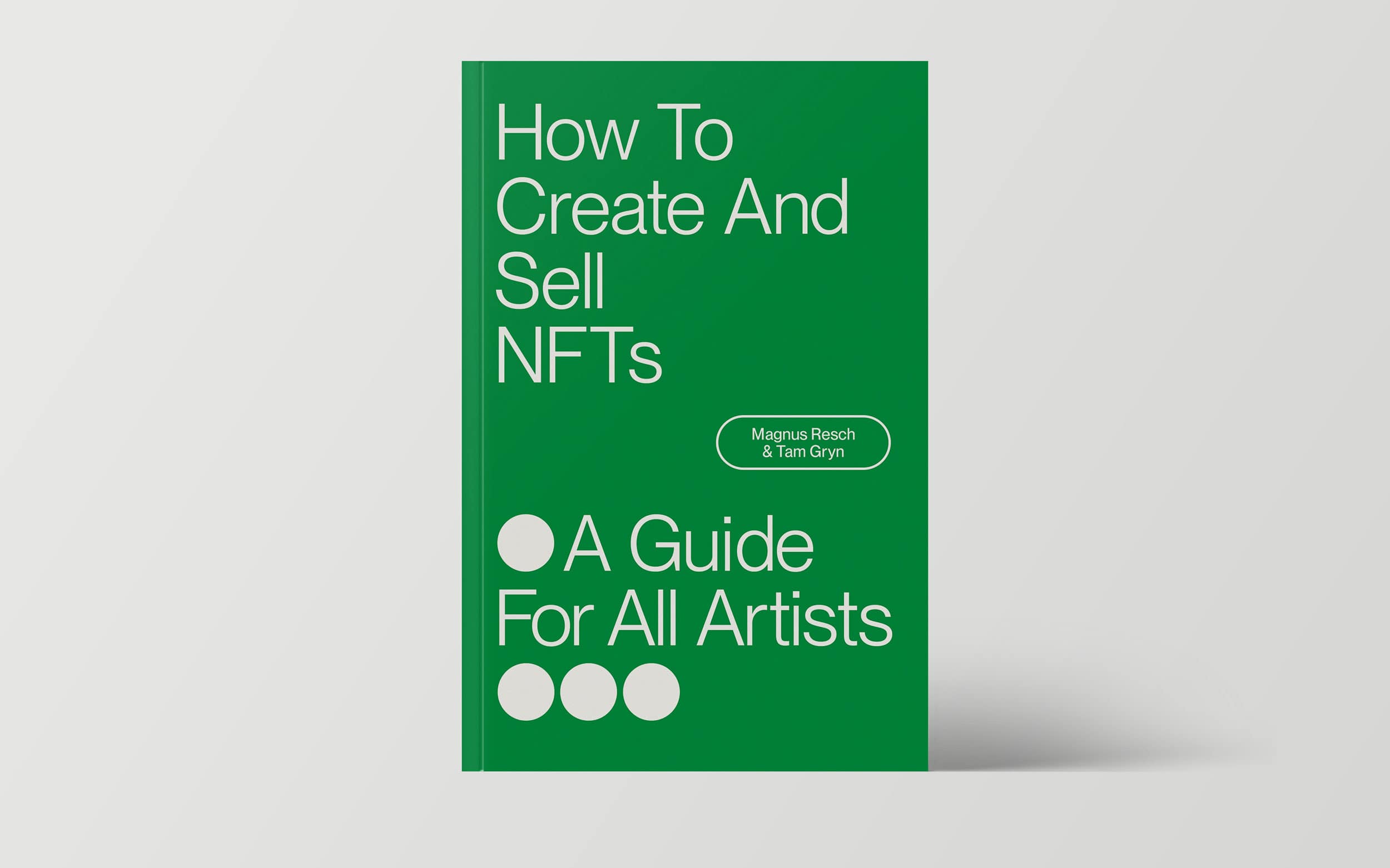
“How to Create and Sell NFTs, A Guide for All Artists,” courtesy of Magnus Resch and Tam Gryn.


